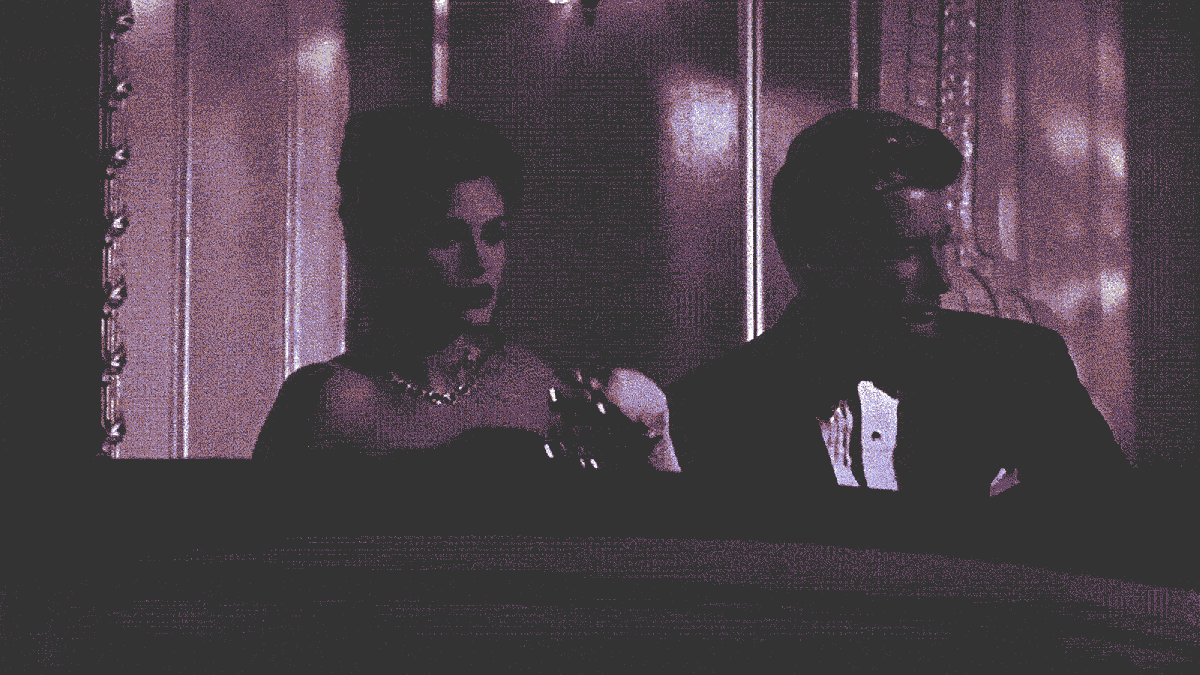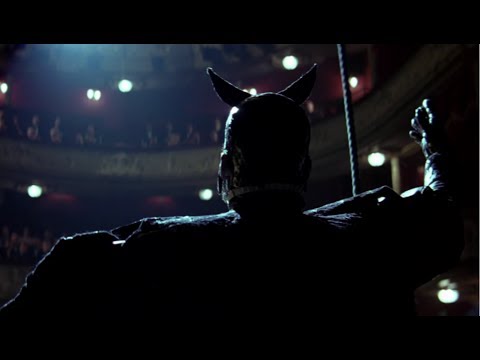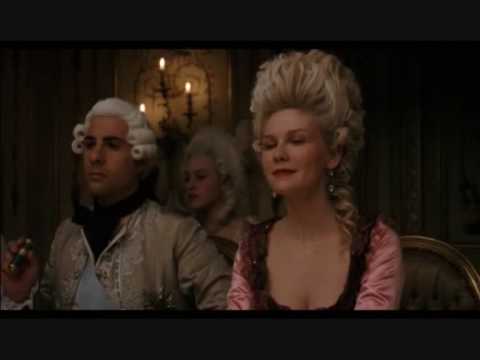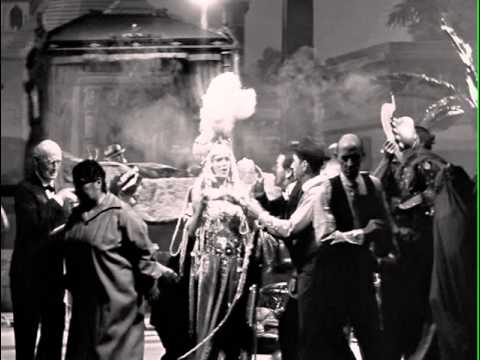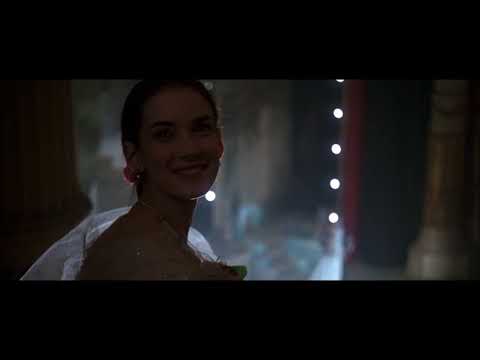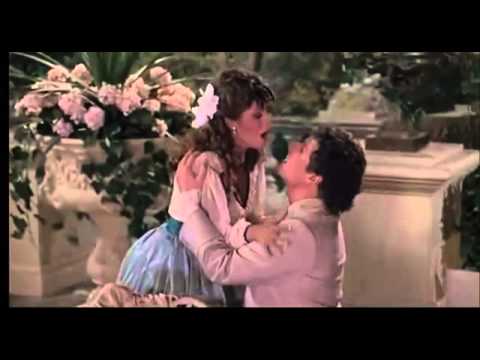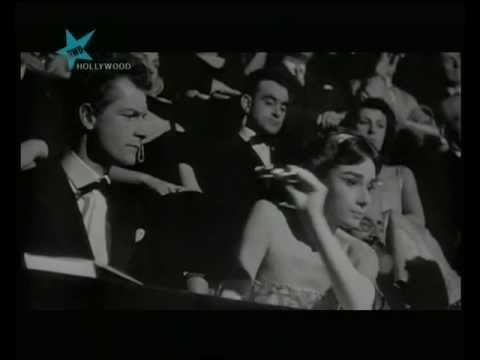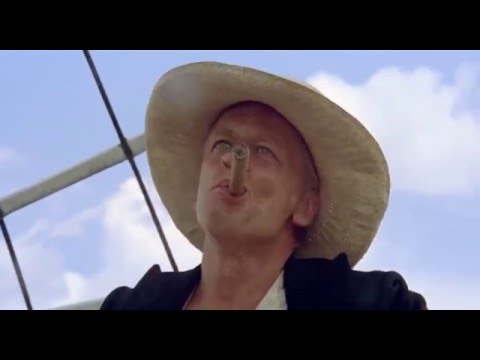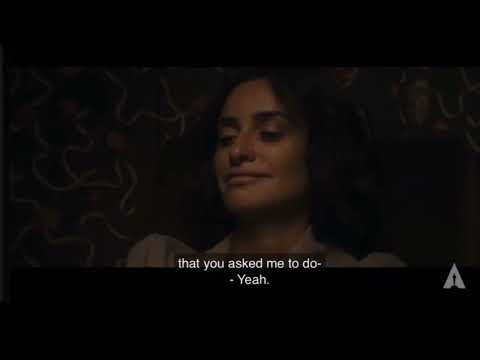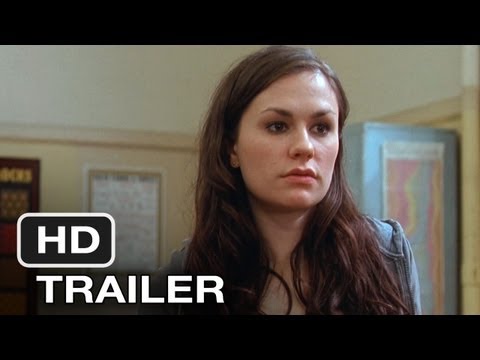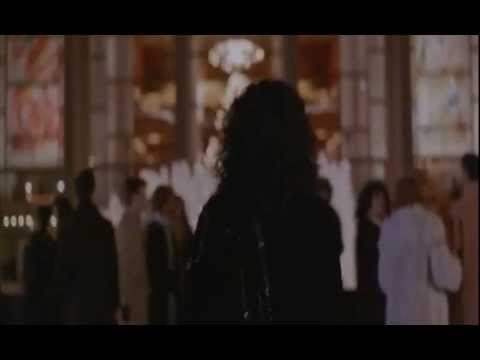On film, characters go to the opera house for meetings, espionage, or murder; operas can bring about moments of revelation, connection, or catharsis. They progress the plot or add texture to the lived-in dimensions of the film’s world. But the best uses of opera in film boost something under the surface, and even add additional layers to the opera. Here are nights at the opera in 12 very different films that use the form successfully for their artistic ends.
Film: “Batman Begins” (Christopher Nolan, 2005)
Opera: “Mefistofele” (Arrigo Boito, 1868)
If young Bruce Wayne had just been able to sit through an opera, Batman would never exist and Gotham would go unsaved. “Mefistofele” is on the night the Waynes attend the opera, and the Walpurgis Night scene is replete with bat-masked dancers spinning from ropes. Bruce, terrified after his fall into the Bat Cave, asks to leave—and the Wayne parents are shot on their departure, completing Bruce’s backstory.
The Faust myth parallels many superheroes’ quests for knowledge, power, and justice; at least Batman learns more quickly than Boito’s Faust to control his urges and see through the temptations of power and revenge offered by Ra’s al Ghul. The evening at the opera is a necessary plot point dictated by comics lore, but the choice of piece and style of its staging is smart.
Film: “Marie Antoinette” (Sofia Coppola, 2006)
Operas: “Platée” (Jean-Philippe Rameau, 1745) and “Castor et Pollux” (Rameau, 1737)
Amid the anachronistic pop soundtrack, Coppola keeps her operas place- and era-appropriate. When the newly married Dauphine attends her first performance at the court theater—“Platée”—she gives “Aux langueurs d’Apollon, Daphné se refusa” a standing ovation, to the court’s shock. She keeps applauding through the sharp looks and comes out victorious, with her husband and the court soon following suit. It is a corny but clear communication of her charm and influence.
Her luck runs out when she is on the throne. “Tristes Apprêts, Pâles Flambeaux” from “Castor et Pollux” plays non-diegetically over the film’s most mournful sequence—paintings brought in and out as a daughter is added, then removed after the young child’s death. In the opera house, when the diegetic aria ends, she applauds, but this time no one joins her.
Film: “Birth” (Jonathan Glazer, 2004)
Opera: “Die Walküre” (Richard Wagner, 1870)
Glazer’s psychodrama about a widow remarrying ten years after her husband’s death—only for a young boy to show up claiming to be her husband reincarnated—is extremely unsettling. While Anna tries to gently steer young Sean away, her fiancé Joseph firmly tells the boy to leave and never return. Wagner’s furious string opening from “Die Walküre” strikes up, becoming diegetic as Glazer cuts to the couple walking to their seats after the lights have dimmed (terrible theater etiquette but excusable considering the circumstances). The camera pans into Kidman’s face as the discomfiture of arriving late settles into the discomfiture of being alone with her thoughts. Unfortunately, the scene cuts during the Vorspiel, leaving the effect that Siegmund and Sieglinde’s forbidden romance has on Anna’s mental state to the imagination of clued-in cinephiles.
The latest from VAN, delivered straight to your inbox
Film: “Citizen Kane” (Orson Welles, 1941)
Opera: “Salammbô” (Bernard Herrmann, 1941)
If Charles Foster Kane and Xanadu are two degrees removed from William Randolph Hearst and Hearst Castle, it makes sense that the film’s opera is similarly an original (re)creation. In Orson Welles, Shakespeare, and Popular Culture, Michael Andregg writes, “Opera signifies Kane’s pretensions to culture and his tyranny over Susan.” Susan, Kane’s second wife, is a tragic figure, pushed into an operatic career despite her lack of aptitude to appease Kane’s ego. There is initial dark comedy in the juxtaposition of Kane’s assertion that he’ll build Susan an opera house if no one will cast her with the newspaper headline “Kane Builds Opera House”; soon, there is heartbreak. Catty comments from the audience and bad reviews disquiet Kane and destroy Susan. She attempts suicide; Kane still barely agrees to let her quit. Soon, she disappears. It is no surprise he dies alone.
Film: “The Age of Innocence” (Martin Scorsese, 1993)
Opera: “Faust” (Charles Gounod, 1859)
As in Visconti’s “Senso,” a historically accurate opera performance provides the backdrop for initial social maneuverings in “The Age of Innocence.” Newland Archer and his bachelor friends watch Act III of “Faust” from their box. In Gilded Age New York, Gounod’s opera is sung in Italian—translating into English would make opera too accessible, but French is equally unthinkable—something Wharton specifies in her novel and Scorsese faithfully reproduces. The opera is only half the spectacle: Newland also has eyes on his fiancée May Welland and her scandalously separated cousin, Countess Ellen Olenska, in the box across the auditorium. This scene is not only a testament to the film’s evocative recreation of Wharton’s novel but establishes the panopticon of New York’s monied set, where every move, indiscretion, and (real or perceived) snub is carefully and cruelly scrutinized.
Film: “Pretty Woman” (Garry Marshall, 1990)
Opera: “La traviata” (Giuseppe Verdi, 1853)
Originally, “Pretty Woman”—a loose adaptation of the Lady of the Camellias story—was going to end in tragedy like its predecessors; thankfully, Hollywood had other ideas. “La traviata” is the perfect—the only—opera Edward Lewis could take Vivian Ward to see during the week he has hired her to accompany him on his Californian business engagements. The three-act journey is presented in snippets through Vivian’s eyes, who is captivated by the experience.
“La traviata” reappears again at the film’s ending. Reusing “Amami, Alfredo” for this moment is odd, but perhaps it is a magical reimagining: As Violetta swears her undying love and begs for Alfredo’s in return, Edward makes good on Alfredo’s broken promise.
Film: “Love in the Afternoon” (Billy Wilder, 1957)
Opera: “Tristan und Isolde” (Wagner, 1865)
Billy Wilder was no stranger to Wagner, bringing “Lohengrin” into his investigation of Nazi associations in “A Foreign Affair.” A decade later, in a lighter and lesser film, Wagnerian diehards are more lovingly lampooned. Ariane, recovering from a flirtation with Frank Flannagan, is up in the balcony’s cheap seats next to a man fervently conducting along to the “Tristan” overture, oblivious to dirty looks. When Frank finally makes his appearance—late, walking straight to the stalls’ front row with his date—Ariane pulls out her opera glasses to watch, making her row-mate think she too is in the Wagnerian fold. At the intermission, she only escapes his passionate declamations about the Liebestod when he rips his jacket from air-conducting too aggressively. Love and opera are both madnesses.
Film: “Fitzcarraldo” (Werner Herzog, 1982)
Operas: “Ernani” (Verdi, 1853) and “I Puritani” (Vincenzo Bellini, 1835)
Brian Sweeney Fitzgerald, a.k.a Fitzcarraldo, never makes it inside an opera house, but it is the aim in pursuit of which he almost kills himself and others. He is introduced as he races 1,200 miles by dinghy to catch a glimpse of Enrico Caruso singing Ernani at the Teatro Amazonas, arriving too late to be admitted. He then sets out to build a grand opera house in Iquitos and to invite Caruso. Due to logistics, money, and the vicissitudes of nature, this does not go to plan. He earns a pyrrhic victory; forced into selling his boat, he convinces the Manaus company to perform “I Puritani” one time on its deck, floating down the Amazon River with an audience on the banks.
Film: “Ferrari” (Michael Mann, 2023)
Opera: “La traviata” (Verdi, 1853)
A key part of becoming Italy’s premier name in racing is being seen, and Enzo Ferrari and his business associates make a glamorous appearance at the opera house for “La traviata” before the 1957 Mille Miglia, cameras flashing. At home, his wife Laura and mother Adalgisa listen to the music on a radio broadcast. Mann’s camera moves between Act III’s onstage tragedy and the faces of Enzo, Laura, and Adalgisa watching and listening in stillness and silence. The recent death of Enzo and Laura’s son hangs in the air. While “La traviata” has no direct relationship to racing, marital infidelities, and the financial woes fuelling the Ferraris’ troubles, the opera becomes a place to seek release and connection, linking one man’s high society appearance and one woman’s secluded grief.
Film: “Margaret” (Kenneth Lonergan, 2011)
Operas: “Norma” (Bellini, 1831) and “Les contes d’Hoffmann” (Jacques Offenbach, 1881)
Lisa Cohen makes Lady Bird McPherson look like an angelic teddy bear of a teenage coming-of-age heroine, but her character grows through selfishness into awareness through witnessing a horrific bus accident. Her trauma and misplaced quest for justice are replete with explicit comparisons to opera, but always in the abstract. In a brutal exchange, she is told that the tragedy she witnessed “is not an opera” and her feelings are falsifying “someone else’s life.” Finally, Lisa accepts her mother’s invitation to the Met. At the start of the Venice act, her mother apologizes that “Les contes d’Hoffmann” is underwhelming compared to the “Norma” she saw with a date earlier in the film. But the Barcarolle finally brings Lisa to sobs, holding her mother’s hand while Renée Fleming sings. To my knowledge, there are no operas about navigating bystander guilt and post-9/11 malaise as a hormone-riddled teenager, but Hoffmann’s misadventures are shot through with moments of beauty and bliss. Lisa needed such a moment more than she realized.
Film: “Moonstruck” (Norman Jewison, 1987)
Opera: “La bohème” (Giacomo Puccini, 1896)
The most fascinating thing about “Moonstruck”—more fascinating than its outrageous scenarios and its characters’ joyous philandering—is that it takes place in an alternate 1980s New York where the Zeffirelli “La bohème” does not exist. Just imagine. (While the sets on stage look like Zeffirelli’s, “Louis Gold” is credited on the poster on the side of the Met). If there is a story here, it needs to be told.
Ronny Cammareri is a diehard: He listens to “La bohème” on vinyl, has posters of Massenet’s “Ariane” and Verdi on his wall, and tells Loretta Castorini—his brother’s fiancée—that he loves two things: her, and opera. And he wants them both for one night only. Is there anything more simply, desperately romantic? There’s no better pick for this big, glorious film than the big, glorious emotions of Puccini—big enough to make Loretta truly believe Mimì would survive.
Film: “The Talented Mr. Ripley” (Anthony Minghella, 1999)
Opera: “Eugene Onegin” (Pyotr Ilyich Tchaikovsky, 1879)
Twenty-five years since its initial release, “The Talented Mr. Ripley” remains arguably the best film to use opera to advance its story. It is a purely cinematic invention; in Patricia Highsmith’s novel, no Venetian opera trip is mentioned. The scene is added in the film to give Tom Ripley, masquerading as Dickie Greenleaf, a chance to go out with heiress Meredith Logue. Once there, Dickie’s girlfriend Marge recognizes him as Tom. Tom is able to prevent the women from meeting, but the moment leads him to greater subterfuge and eventually killing off Dickie for a second time.
Minghella chooses to stage “Eugene Onegin,” zeroing in on the second act duel with a spectacular fabric blood effect. Here, he also cements a thematic change he makes to Highsmith’s novel; the film’s Tom Ripley is more romantic than psychopathic, his attraction to Dickie almost tender and confused rather than the result of a calculated self-loathing. The murder on the boat is a “crime of passion” or foolish mistake (how operatic) rather than a careful plan. The same could be said of Onegin killing his best friend Lensky in a duel that he thoughtlessly provoked. Through this funhouse mirror, as Onegin cradles his dead friend (in the snow, rather than on a boat), both Ripley and Onegin appear even more tragic and pathetic. ¶
Subscribers keep VAN running!
VAN is proud to be an independent classical music magazine thanks to our subscribers. For just over 10 cents a day, you can enjoy unlimited access to over 875 articles in our archives—and get new ones delivered straight to your inbox each week.
Not ready to commit to a full year?
You can test-drive VAN for one month for the price of a coffee.

